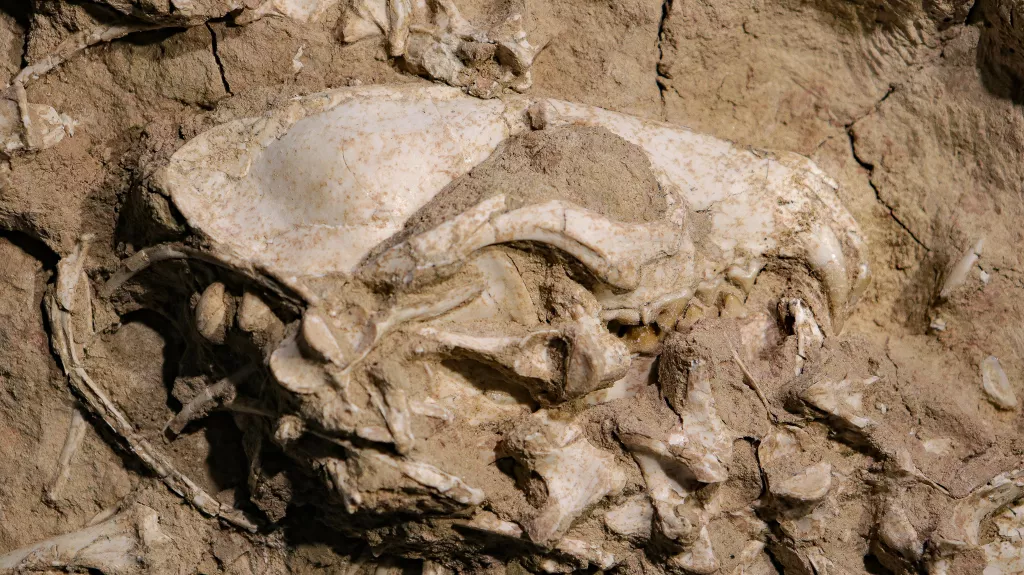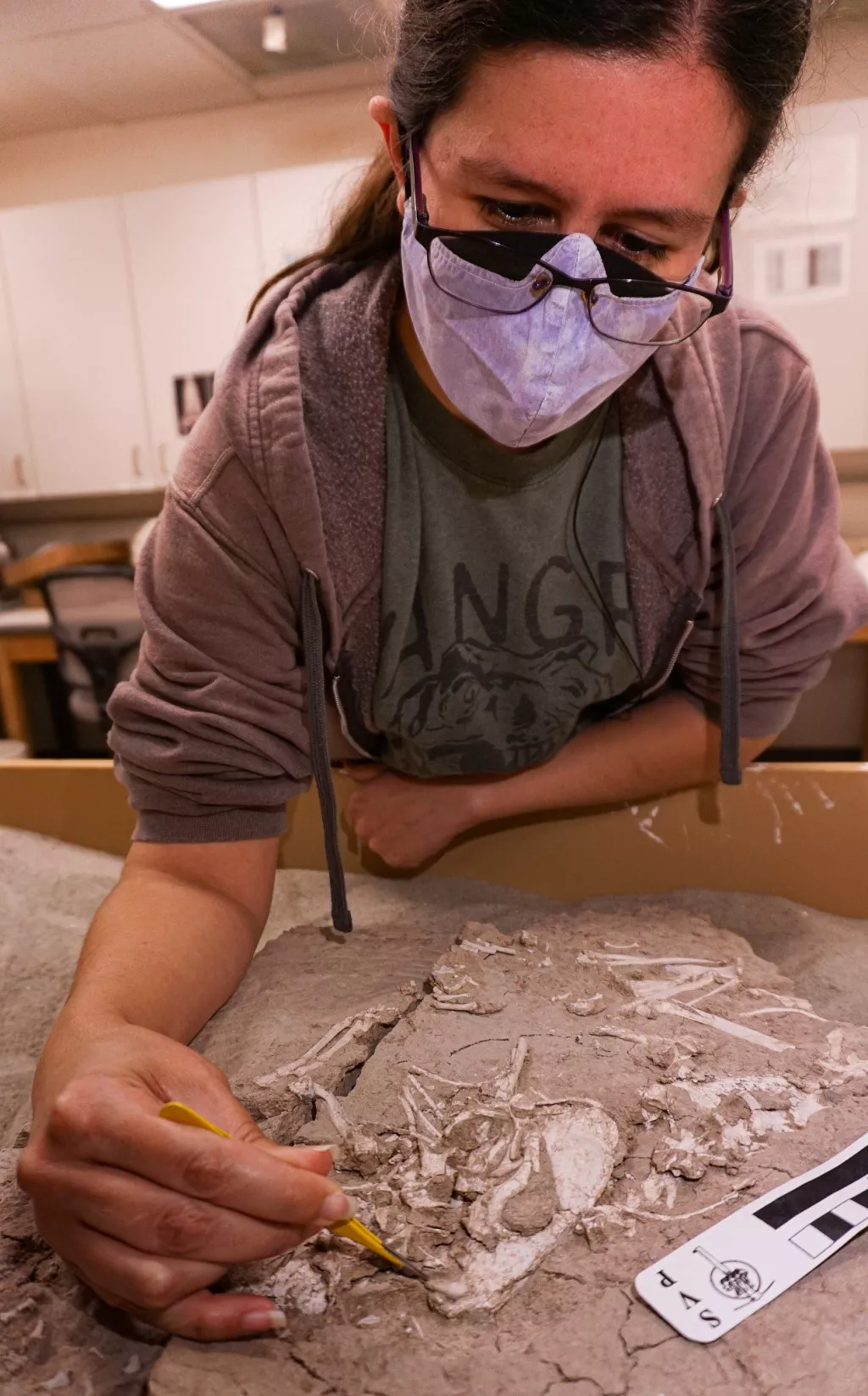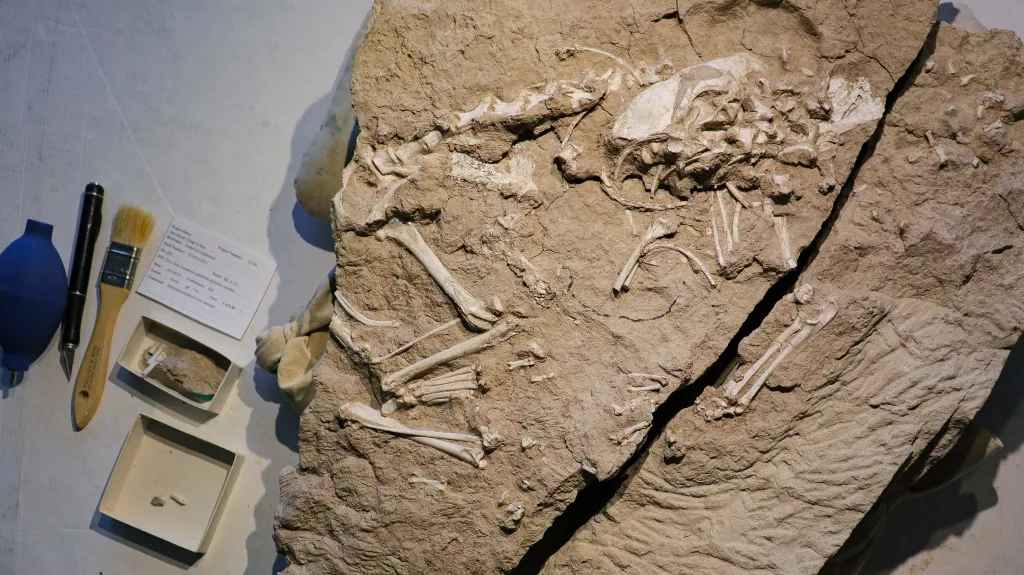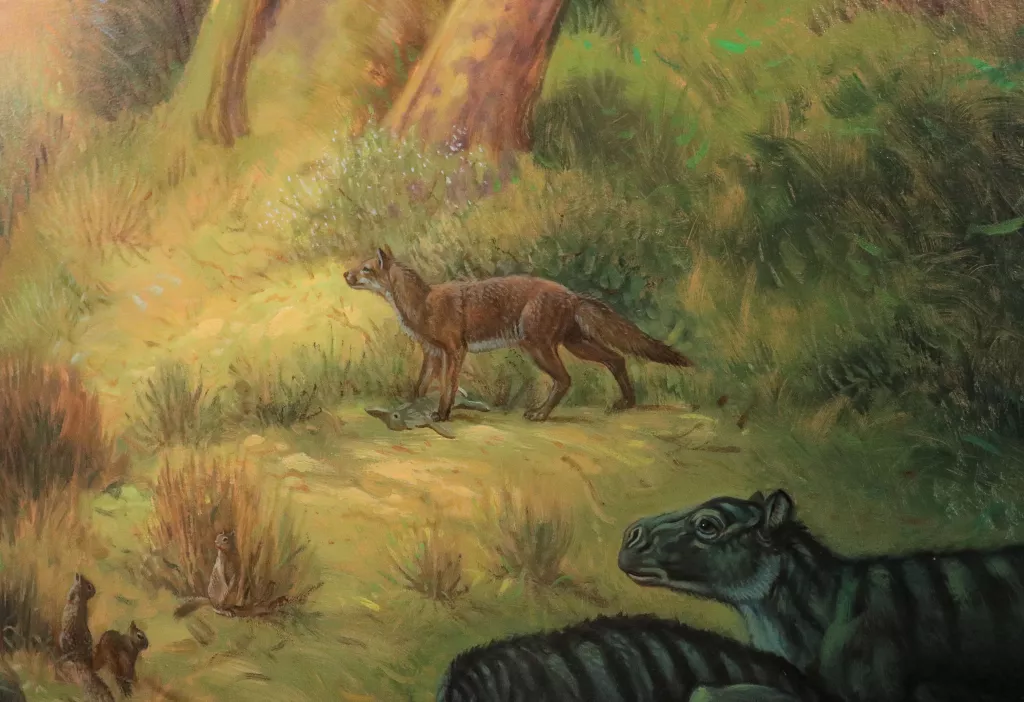Rare fossil of ancient dog species discovered by paleontologists
These canines are believed to have roamed the San Diego area up to 28 million years ago.
The bond between humans and dogs goes back thousands of years. When humans first migrated to North America, they brought their dogs with them. These domesticated dogs were used for hunting and provided valuable companionship to their owners. But long before the canines arrived here, there were predatory doglike canid species who hunted the grasslands and forests of the Americas.

A rare and nearly complete fossilized skeleton of one of these long-extinct species was discovered by Paleontologists from the San Diego Natural History Museum. It was discovered in two huge slabs of sandstone and mudstone unearthed in 2019 during a construction job in San Diego County’s Otay Ranch neighborhood.
This fossil is from a group of animals known as Archeocyons, which translates as “ancient dog.” The fossil dates to the late Oligocene epoch and is believed to be 24 million to 28 million years old.

Their discovery has been a boon for scientists at the San Diego Museum of Natural History, including paleontology curator Tom Deméré, post-doctoral researcher Ashley Poust, and curatorial assistant Amanda Linn.
Because the museum’s current fossils are incomplete and limited in number, the Archeocyons fossil will assist the paleo team in filling in the gaps on what they know about the ancient dog creatures that lived in what is now known as San Diego tens of millions of years ago.
Did they walk on their toes like dogs nowadays? Did they dwell in trees or burrow in the ground? What did they eat, and what creatures preyed on them? What was their relationship to the extinct doglike species that came before them? Is this a completely new species that has yet to be discovered? This fossil provides SDNHM researchers with a few additional pieces of an incomplete evolutionary puzzle.
Archeocyons fossils have been discovered in the Pacific Northwest and the Great Plains, but almost never in Southern California, where glaciers and plate tectonics have scattered, destroyed, and buried numerous fossils from that time period deep underground. The main reason this Archeocyons fossil was discovered and sent to the museum is a California legislation that mandates paleontologists to be present at large building sites to locate and safeguard potential fossils for future research.
Pat Sena, a paleo monitor for the San Diego Natural History Museum, was examining the rocky tailings in the Otay project about three years ago when he saw what seemed to be small white bits of bone emerging from the excavated rock. He drew a black Sharpie marker on the pebbles and had them relocated to the museum, where scientific study was immediately halted for nearly two years due to the pandemic.
On December 2nd 2021, Linn started working on the two large rocks, using small carving and cutting tools and brushes to gradually pare away the layers of stone.
“Every time I uncovered a new bone, the picture got clearer,” Linn said. “I’d say, ‘Oh look, here’s where this part matches up with this bone, here’s where the spine extends to the legs, here’s where the rest of the ribs are.”
According to Ashley Poust once the fossil’s cheekbone and teeth emerged from the rock, it became clear that it was an ancient canid species.

In March 2022, Poust was one of three international paleontologists who announced their discovery of a new saber-toothed catlike predator, Diegoaelurus, from the Eocene epoch.
But where ancient cats had only flesh-tearing teeth, omnivorous canids had both cutting teeth in front to kill and eat small mammals and flatter molar-like teeth in the back of their mouths used to crush plants, seeds and berries. This mix of teeth and the shape of its skull helped Deméré identify the fossil as an Archeocyons.
The fossil is fully intact except for a portion of its long tail. Some of its bones have been jumbled about, possibly as the result of earth movements after the animal died, but its skull, teeth, spine, legs, ankles and toes are complete, providing a wealth of information on the Archeocyons’ evolutionary changes.
The length of the fossil’s ankle bones where they would have connected to the Achilles tendons suggests the Archeocyons had adapted to chase its prey long distances across open grasslands. It’s also believed that its strong, muscular tail may have been used for balance while running and making sharp turns. There are also indications from its feet that it possibly could have lived or climbed in trees.
Physically, the Archeocyons was the size of today’s gray fox, with long legs and a small head. It walked on its toes and had nonretractable claws. Its more foxlike body shape was quite different from an extinct species know as Hesperocyons, which were smaller, longer, had shorter legs and resembled modern-day weasels.

While the Archeocyons fossil is still being studied and is not on public display, the museum does have a major exhibit on its first floor with fossils and a vast mural representing creatures that lived in San Diego’s coastal region during ancient times.
Ashley Poust went on to say that one of the creatures in artist William Stout’s painting, a foxlike creature standing over a freshly killed rabbit, is similar to what the Archeocyons would have looked like.
Related Post
A shocking documentary proves that mermaids do exist
SHOCKING Revelation: Thuya, Mother of Queen Tiye, Was the Grandmother of Akhenaten and Tutankhamun—What Ancient Egyptian Secrets Did She Leave Behind?
Breaking News: Astonishing Discoveries at Karahan Tepe Confirm an Extraterrestrial Civilization is Hiding on Earth, and NO ONE Knows!
Breaking News: Researchers FINALLY Discover U.S. Navy Flight 19 After 75 Years Lost in the Bermuda Triangle!
NASA’s Secret Investigation: Uncovering the Astonishing Mystery of the UFO Crash on the Mountain!
Explosive UFO Docs LEAKED: Startling Proof That Aliens Ruled Ancient Egypt!